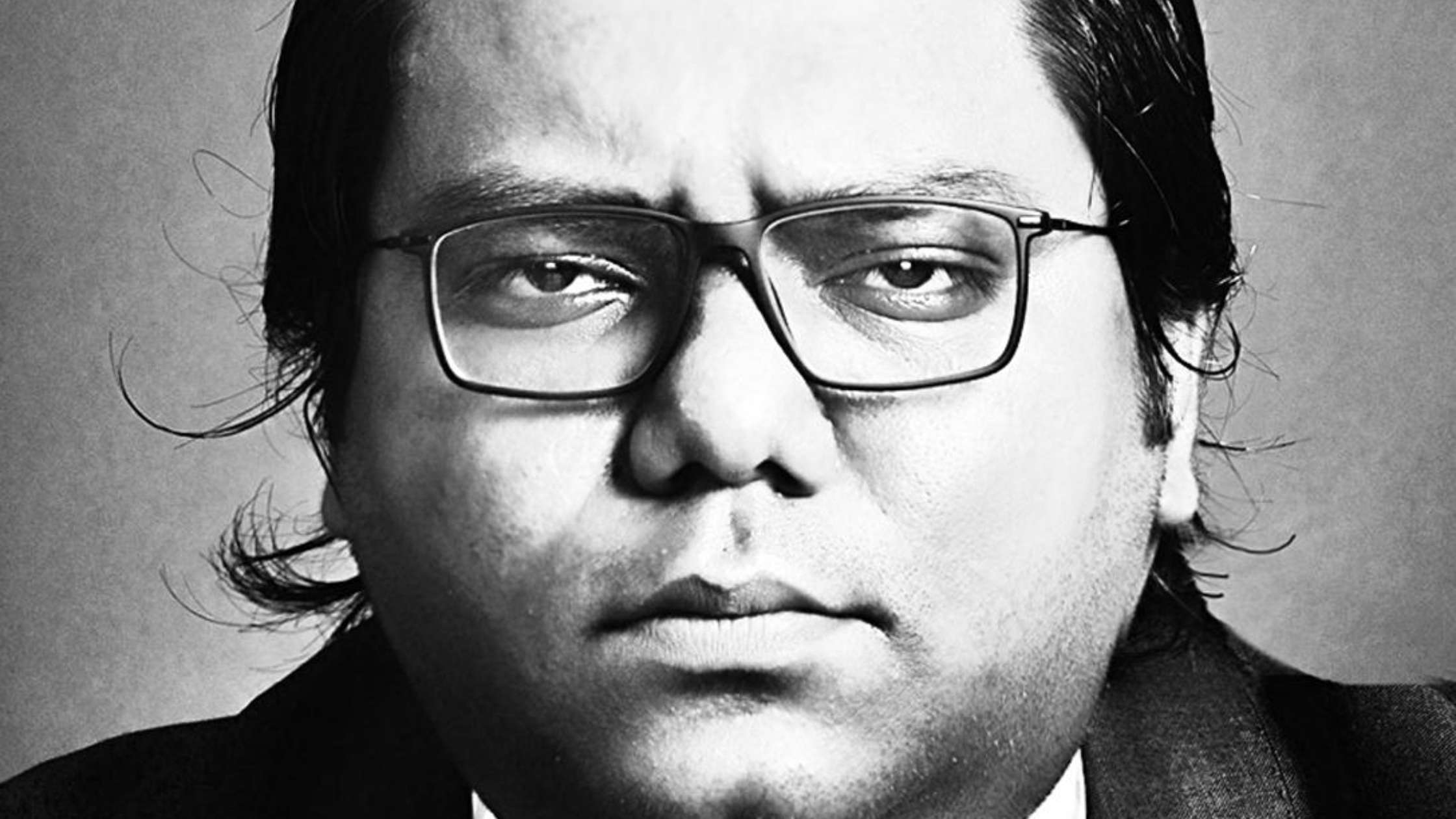After twenty years in a partnership role at Australian firm Allens Arthur Robinson, Bob Santamaria took the plunge and moved in-house in 2007, joining ANZ as Group General Counsel. The GFC hit a mere few months later, rocking the banking world to its core. For Santamaria, it was a case of sink or swim, and despite the inevitable challenges that ensued, he explains to Rebecca Brookes why he has never looked back.
Bob Santamaria is often teased by colleagues and friends about his timing in relation to joining Australia and New Zealand Banking Group Limited (ANZ). Poised to take-on the chief legal role at Australia’s third largest bank in 2007, Santamaria, then a corporate partner at Allens Arthur Robinson (AAR), did not have a legal background in banking nor particularly in-depth industry knowledge. And of course he had little idea that his arrival at the bank would precede the onset of the global financial crisis by a mere few months… hardly ideal circumstances for a comfortable transition to his new role as Group General Counsel.
In fact, the challenges of the role were to prove even more imminent than the threats that would be posed by the financial meltdown. As it turned out, Santamaria found himself thrown in the deep end even before his first day on the job; any grace period he might have enjoyed was eliminated with a single telephone call. “On my last day in private practice at AAR, I received a call from the Chief of Staff to the ANZ CEO to tell me about a major problem that had arisen and which needed urgent attention,” he says. This was referring to the fact that the US Treasury’s Office of Foreign Assets Control (OFAC) suspected ANZ of having violated US trade sanctions concerning Sudan and Cuba through its reporting of certain transactions between 2004 and 2006. “The CEO wanted me to be across this problem on my first day, and to know by the end of my second week at the bank what we were going to do about it,” he recalls. “I knew nothing about US trade sanctions when I received that telephone call, I thought, ‘What on earth have I got myself in for?’”
Santamaria presented to OFAC in Washington on several occasions, which ultimately accepted his explanation that the erroneous reporting had arisen inadvertently rather than because of any intended breach on the part of the bank. ANZ paid a US$5.75 million fine, a vastly reduced penalty in large part owing to the bank’s cooperation with OFAC’s investigation; other banks who have committed similar violations have been slapped with fines closer to the vicinity of US$500 million. “The experience was incredibly draining, but also exhilarating,” Santamaria says. “We were genuine in our explanation of what had gone wrong, and it was hugely satisfying to be able to convince OFAC, which had initially been deeply cynical, of that fact.”
 The experience was a taste of things to come. In the midst of the turmoil generated by the GFC, Santamaria found himself faced with issues stemming from another high-profile saga, namely the billion-dollar collapse of boutique stockbroker Opes Prime. Once news of the collapse broke, the Australian Securities and Investments Commission (ASIC) immediately began a review: of concern was whether Opes Prime had been operating a managed investment scheme (MIS) that required registration, and whether ANZ and Merrill Lynch, as its main lenders, had actual knowledge of the stockbroker’s alleged contravention of provisions relating to the operation of unregistered schemes.In addition to commissioning ANZ’s own review – which was co-led by ANZ CEO Mike Smith and leading company director and former external insolvency expert David Crawford – Santamaria was soon confronted with at least a dozen writs and class actions, the collapse having quickly prompted a number of investor-led law suits. “It was as though things were coming from left, right and centre,” he recalls. “Basically the legal team had to work morning, noon and night for eighteen months to get matters resolved.”The bank ultimately devised a scheme of arrangement through which ANZ and Merrill Lynch were able to make a settlement offer to creditors, something that had never been attempted in Australia before in the context of an insolvency. “I recalled a mentor having told me years earlier that all sorts of things could be achieved when it came to schemes of arrangement, so I thought, ‘Why not give it a go?’” Santamaria says. “It was ultimately approved by the Federal Court, and it is one of the things our team is very proud of. An overwhelming majority of creditors voted in favour of the scheme, which essentially shut the various actions down.”Although he describes the pressure as having been “relentless” during the first eighteen months of his role as Group General Counsel, Santamaria believes that experience gained during his time in private practice was invaluable in helping him to deal with such challenges head on. “I joined ANZ as Group General Counsel aged 53, after twenty-five years of corporate practice during which time I had the opportunity to handle some difficult cases,” he says. “I am so glad I was not approached for this job any earlier!”Former experience includes having been the relationship partner to packaging group Amcor when the company faced investigation and a class action for its role in the Visy-Amcor price-fixing cartel, Australia’s highest profile cartel case, and leading a team in relation to the DLC merger in 1995 of Rio Tinto and its Australian affiliate CRA. “Even if the matters did not carry the same level of crisis, I think having the experience of running these sorts of transactions meant that I was better able to cope with all the problems in the bank arising from the GFC,” Santamaria says “Ultimately, private practice provides exposure to a whole range of clients throwing a whole range of problems at you, which I think helps to put you in good stead for the role of general counsel.” Santamaria is quick to highlight the role played by others in assisting with his transition in-house at ANZ, saying, “I have been terribly lucky to have very good people supporting me here.” He also recognises the influence of others in helping to shape his career more generally. For instance, he credits the senior partner under whom he completed his articles of clerkship at local Melbourne firm Rennick & Gaynor for steering him initially in the right direction. “Although he worked in the field of Personal Injury, when I decided the practice area was not for me, he suggested I consider commercial law, which was viewed at the time as the real growth area,” he says. Family also had a role to play, his uncle then taking him on at the small investment bank he was running. The three-year role provided Santamaria with a taste of life as an in-house lawyer before he returned to the realm of private practice. On paper, Santamaria’s career path appears seamless: after leaving the investment bank, he spent two years at another local firm before joining what was to eventually become AAR, with whom he remained for the following twenty-three years. Specialising predominantly in M&A and reconstruction work, it was not long before he was appointed partner at the firm, a role he held for twenty years before accepting the position as head of AAR’s corporate department nationally. Given his success, one would assume that each move was made with confidence, and it is surprising when he admits to having been plagued with self-doubt earlier in his career. “I used to lack self-confidence,” he recalls, “in a way that was really quite cancerous. I was so lucky that various partners at AAR not only became very good friends but also took a tremendous interest in my development.” The support he was shown has never been forgotten, and when invited to comment on the role of mentorship in today’s legal world, he remarks, “there is nothing more important than looking after young lawyers.” Asked whether any elements of self-doubt continue to linger, Santamaria nods. “I said no to the offer of running the corporate department at AAR twice before finally accepting the position,” he says. “It was the same with my current role at ANZ… I mulled over the offer of Group General Counsel for five or six months. In hindsight, both were the best moves I could have ever made. I should really learn to back the opposite of my instincts!” he laughs. One thing Santamaria has learnt over the years is how best to alleviate the stresses and strains that inevitably come with working in a high-pressure environment. His tactics have proved all the more important in his current role, where new challenges are presented against the backdrop of a shifting and still volatile economic landscape. So what are his particular secrets? “I believe it is critical to look after your health, and to have interests outside work,” he says. “For me, my number one interest is overwhelmingly my family.” A father of five, he also derives great pleasure from surfing and is a keen follower of the Australian Football League (AFL)’s Carlton football club. Distractions from workplace stresses are no doubt welcome, as it is clear Santamaria must need to be fully engaged when acting as Group General Counsel. The role requires him to report to and liaise with three of the bank’s most senior stakeholders – CFO Peter Marriott, Chairman John Morschel, and CEO Mike Smith – on a day-to-day basis. Yet although Santamaria has a daily interface with Smith by virtue of the size of the matters that land on his desk, the in-house function ultimately enjoys an autonomy that some general counsel may only dream of. “Whilst in the performance of my role it is anticipated that the legal function will meet the expectations of senior management, as Group General Counsel I am appointed and can only be removed by the Board,” he confirms. “This structure is ideal,” he says, referring to its ability to ensure a sufficient level of independence from management. Santamaria spends the vast majority of his time advising the Board and senior management on various governance concerns and other difficult issues that emerge. “The matters which carry a serious reputational impact for the bank are the ones I tend to get involved in,” he says. “In addition to constant involvement with regulators around the globe, I would now identify litigation as the other main defining feature of my role,” he adds. Of course, there are numerous other matters for which the legal function is responsible, and whilst on a practical level Santamaria has eight direct reports, he ultimately relies on all of the lawyers who sit across the bank’s operations – spanning the Australia division, the New Zealand division, the APEA division (comprising Asia Pacific, Europe and the Americas), and Institutional banking – worldwide. Whilst the majority of the in-house team are located in Australia and neighbouring New Zealand, ANZ’s aggressive and successful expansion into Asian markets in recent years has seen the department’s presence increase substantially in other jurisdictions. Where there were initially very few lawyers to support Asia Pacific, build-up in the region has led to a growth in the legal team in locations such as Hong Kong, Singapore, Vietnam, China, and Taiwan. “I believe it is critical to have people on the ground who know the local business environment and the local legal environment, and who can get to know the regulators,” Santamaria says. He estimates that ANZ now has around forty-five lawyers across some thirty jurisdictions who work alongside the remainder of the team back home. He notes that organic growth of the bank’s legal infrastructure has been bolstered by opportunistic M&A afforded by the GFC. “For example, we picked up around fifteen lawyers with the acquisition of the Asian operations of the Royal Bank of Scotland,” he says. There has, of course, been the inevitable pressure on ANZ’s legal department, as with other departments across the bank, to keep internal and external costs flat in recent years. Yet Santamaria says he has largely been left to his own devices when it comes to managing ANZ’s relationship with external practitioners, and has not sought to shake-up existing arrangements. He has, however, been very clear with firms about his expectations concerning service from the beginning. “I know from running the corporate department at my old firm that partners have to increasingly justify their existence. The level of profit share is directly linked to the work brought in, and because of this there is an inherent temptation on partners to put their interests first, which I completely understand,” he says. “When I arrived, I told external firms that if they wanted repeat work from ANZ, the single greatest thing they could do was always put our interests first.” With global stockmarkets once again taking a battering in 2011, the pressure on in-house legal departments across the globe to reduce legal spend will undoubtedly continue to have implications for legal providers. Santamaria is unlikely to change tack, however. He maintains that the greatest returns will be available to those firms which, seeing value in longevity, are prepared to invest in a relationship with ANZ. He explains, “I was very clear with our providers that I would always look after and reward those who looked after us first.” |

















